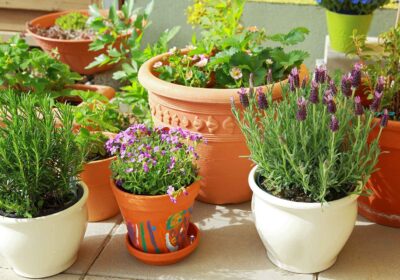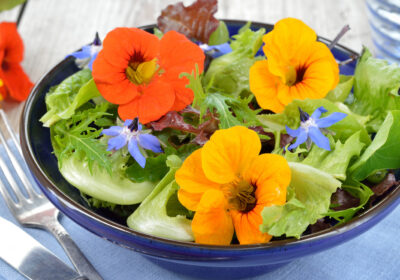Spider Plants Indoor Care 101: Do Spider Plants Need Sunlight?
Spider plants are a common name for Chlorophytum comosum, natives of tropical Africa. There are a lot of spider plant kinds and scientific names around the world now. They’re all referred to as spider plants as long as they have long stems and spiderettes.

Spider plants can grow to a length of twenty to forty centimeters. They have a pointed tip and long, flat green leaves with white color around the edges. Spider plants can grow as indoor or outdoor plants, depending on the treatment. So, how’s the perfect care for spider plants?
Do Spider Plants Need Sunlight?
The answer is yes. Spider plants grow best in indirect sunlight. Because by nature, in the tropical jungle of Africa, Asia, and Australia, they grow under a canopy formed by bigger trees around them. This canopy protects the plants from direct sunlight, while still allowing sun rays to pass through.
So if you plan to plan them indoors and put them near a south-facing window, or west-facing window, it’s better to use a sheer fabric on the window to block direct sunlight. Direct sunlight can burn the plant’s leaves. If you place the snake plants in the east-facing window or north-facing window, it’s not necessarily need filtering.

Spider plants are flexible. When exposed to bright and indirect sunlight, the leaves will grow larger and faster. The white striping will also be even more highlighted. But on the other hand, they can also endure low light settings. But in this kind of environment, they are less likely to grow the spiderettes.
You need to be aware of yellow leaves and root rot. If these symptoms start happening on your spider plants, it means they are not getting enough sunshine and need to be relocated.
How Much Water Spider Plants Need?

Spider plants do not like too much water. They prefer a moist environment and still do fine in semi-arid environments. To prevent overwatering your spider plants, check the top of the soil before watering. Make sure 50 percent of it is dry. If it is still wet, wait for another day to water the spider plants. Recommended schedule to water a spider plant is once a week.
Overwatering is not good for spider plants because the soil will get damp and cause root rot. To prevent this, you can make sure the pot has enough drainage holes. These drainage holes can help the moisture to be evenly distributed throughout the soil. After watering the spider plants, wait until all the water passed through the drainage holes, then remove it from the saucer.
Fertilizer for Spider Plants

Moderation is crucial when fertilizing spider plants. Overfertilize will make spider plants not grow well and cause browning on the tip of the leaf.
Fertilize the spider plants once a month during the spring and summer, the growing season for spider plants. Throughout the winter, spider plants become dormant, like other indoor plants. So there is no need to fertilize spider plants during winter.
The best fertilizer for spider plants is a high-quality liquid fertilizer. Add the liquid fertilizer into the watering can. It will make the application of fertilizer more controlled and provide a consistent supply of nutrients that easily sink into a plant’s soil. The best liquid fertilizer to purchase is the one with a balanced ratio of nutrients, such as nitrogen, phosphorus, and potassium. These nutrients will support the health, strength, and growth of spider plants.
Spider Plants Benefit

Besides being easy to grow and take care of, spider plants also have a lot of benefits to your home. According to NASA, the spider plant is one of the top three houseplants for eliminating formaldehyde, a common household toxin found in manufactured wood items, plastic materials, pesticides, leather products, adhesives, apparel, drapes, and other stuff. Spider plants are also able to help air purification in your home. They can help remove hazardous substances such as carbon monoxide, xylene, formaldehyde, and toluene.
According to ASPCA (American Society for the Prevention of Cruelty to Animals), spider plants are also considered non-toxic to pets.
The spider plant is a plant that produces a lot of water. The water is absorbed through the roots and then circulated through the stems and leaves. When water has reached the leaves, the water evaporates, raising humidity levels. Airborne infections such as colds, coughs, sore throats, and flu-like symptoms, are reduced by higher humidity.
Gift Ideas Using Spider Plants

Because of the characteristics of the spider plants that are easy to grow and take care of, plus all the benefits, spider plants are also considered a perfect gift. Spider plants will make perfect decorations on every corner of the house. Even for balcony and office space. Spider plants also go well in flower arrangements, combined with tropical or bright-colored flowers. Flower Advisor has a lot of beautiful designs using spider plants. One of them that you probably needed most is Congratulations Flowers. It is a good gesture to send congratulation flowers to friends and family who celebrate important achievements. Send congratulation flowers to show them that you care and appreciate them.
Flower Advisor has some congratulations flowers options designed with spider plants. The most iconic one is the Prosperity Pinneaple Arrangement which consists of a spider plant placed in a high-quality pot and decorated with bright yellow flowers. This design looks like a pineapple. There is also a bigger Prosperity Pinneaple Arrangements with more kinds and colors of flowers.
This gift is perfect for congratulatory giving. Order it easily from the Flower Advisor website or application. Flower Advisor provides 24 hours delivery service to any local or international address.


















